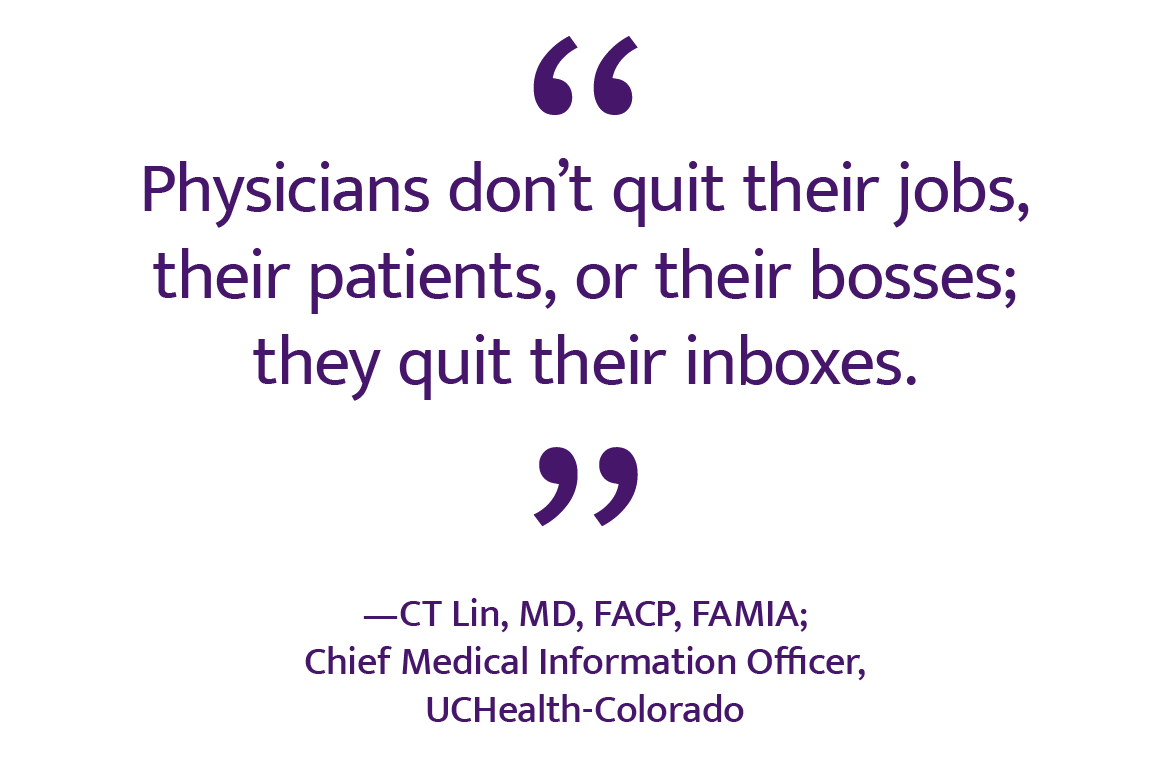
- Overview
- 4 Strategies
- Resources
- About
Contents
The EHR problem: How did we get here?
The electronic health record (EHR) has profoundly changed the practice of medicine and is perceived as both a blessing and a burden by clinicians who use it. Most physicians who did not begin their training and enter practice using a sophisticated EHR only learned enough to “get by.” Younger physicians who did go through medical training using a modern-day EHR typically did not have the bandwidth to focus on mastering the EHR along with their medical knowledge.
Furthermore, the near-universal adoption of virtual care and telehealth during the COVID-19 pandemic has increased patient expectations and awareness about EHR-based communication tools, resulting in increased physician time spent on the EHR.
Meanwhile, the EHR has evolved dramatically in both positive and negative ways. While most EHRs now have customizable tools that, if used optimally, can save physicians time, there are also many more unnecessary clicks and automated messages clogging up inboxes. The EHR burden is a major contributor to physician burnout, and it has become a problem that individual physicians cannot fix on their own. It is imperative for organizations to learn how to tame the EHR by implementing effective system-level policies and responding to feedback for continuous system-level improvement.
How can we tackle this problem? How will this playbook help?
The EHR problem encompasses a few buckets:
- the volume of unnecessary work that is being done (eg, extra clicks, extraneous or duplicative messages, note bloat)
- the volume of necessary work that needs to be done but can be shared with nonphysician team members (eg, chart review, order entry, documentation, and inbox management)
- the technology itself (eg, interfaces or functionalities that users may not be familiar with)
This playbook addresses each of these buckets so that individual clinicians and their practices can:
- Minimize the unnecessary work by de-implementing unnecessary regulations at the system level and reengineering the flow of messages into the EHR inbox
- Manage the necessary work by utilizing team-based care principles to offload inbox management, order entry, chart review, and documentation from physicians alone
- Become more personally proficient at using EHR technology
What’s in your control?
Working with leadership is imperative to accomplish any of these changes. Some changes will be easy to make; others will be more difficult. Some changes may be institution- or organization-specific, while others may be governed by federal regulations. Having a shared understanding between leaders and practicing clinicians of “what’s in your control” helps overcome inertia (or resistance to change) while building trust and transparency.
Who is this playbook for?
This Taming the EHR Playbook (PDF) is for:
- Daily EHR users (eg, physicians, physician assistants, nurse practitioners, nurses, and medical assistants)
- Organizational leaders (eg, Chief Medical Information Officers [CMIOs] and Chief Compliance Officers [CCOs])
- Medical directors
- Practice managers
- Operations leaders
Anyone interested in maximizing the benefits while minimizing the burdens of the EHR can learn from the content outlined and linked to within this playbook.




